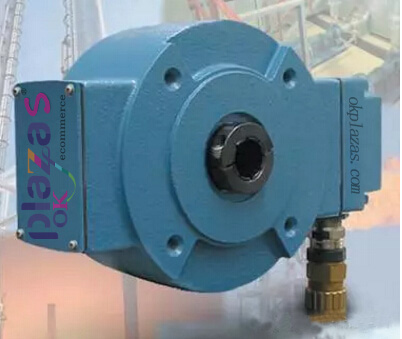Heavy duty encoder
Heavy duty encoder

In order to adapt to more demanding industrial environments, heavy-duty encoders have been specially developed. Compared with traditional industrial encoders, heavy-duty encoders have stronger shock and vibration resistance, and their shells can also adapt to various harsh environments.
Heavy-duty encoders generally use magnetoresistive technology to achieve higher stability. Magnetic encoders overcome the shortcomings of traditional photoelectric encoders in principle and ensure reliable operation in heavy-duty situations. If optical principles are used, the code disc must also be made of unbreakable materials, generally metal or polyester film materials. In order to match the application of high-power motors in structure, heavy-duty encoders generally adopt a super-large aperture design, and can be directly installed on the end faces of various motors. Generally, there are thermal isolation and electrical isolation in the protection of the shaft.
The detection principle of the magnetic encoder mainly relies on the change of the magnetic field, so pollutants such as water, oil and dust will not have any influence on it, and there is a certain gap between the pulse wheel and the sensor, and non-contact will not cause any wear. RIM Tach series heavy-duty encoders are specially designed heavy-duty reluctance encoder products that use the principle of reluctance to provide high-performance speed and position feedback for AC and DC motor drive control systems. This series of products uses a solid cast iron housing, a replaceable stainless steel sensor module and a first-class impulse wheel. In particular, dual-output products use two independent sensor modules. If one of them is damaged, it can be repaired and replaced while the other is to ensure that the signal feedback is not interrupted. This ensures the reliable operation of the system without affecting normal production.

Due to the harsh environment of heavy-duty industries such as metallurgy, papermaking and port machinery, it has the characteristics of high temperature and high humidity, oily dust, shock and vibration. Traditional photoelectric encoders are limited by the glass code disc in terms of working principle. Large shocks and vibrations may cause the code disc to break; if the seal is not good, water, dust, oil and other pollutants will also enter the encoder and cause encoding. The device fails. Heavy-duty applications generally run continuously for 24 hours and require high reliability. As the core feedback device, the encoder will cause the shutdown of the entire equipment and even the production line once a failure occurs, resulting in very huge losses. Therefore, heavy-duty encoders are particularly suitable for applications in metallurgy, papermaking, woodworking machinery, heavy machinery and other industries.





